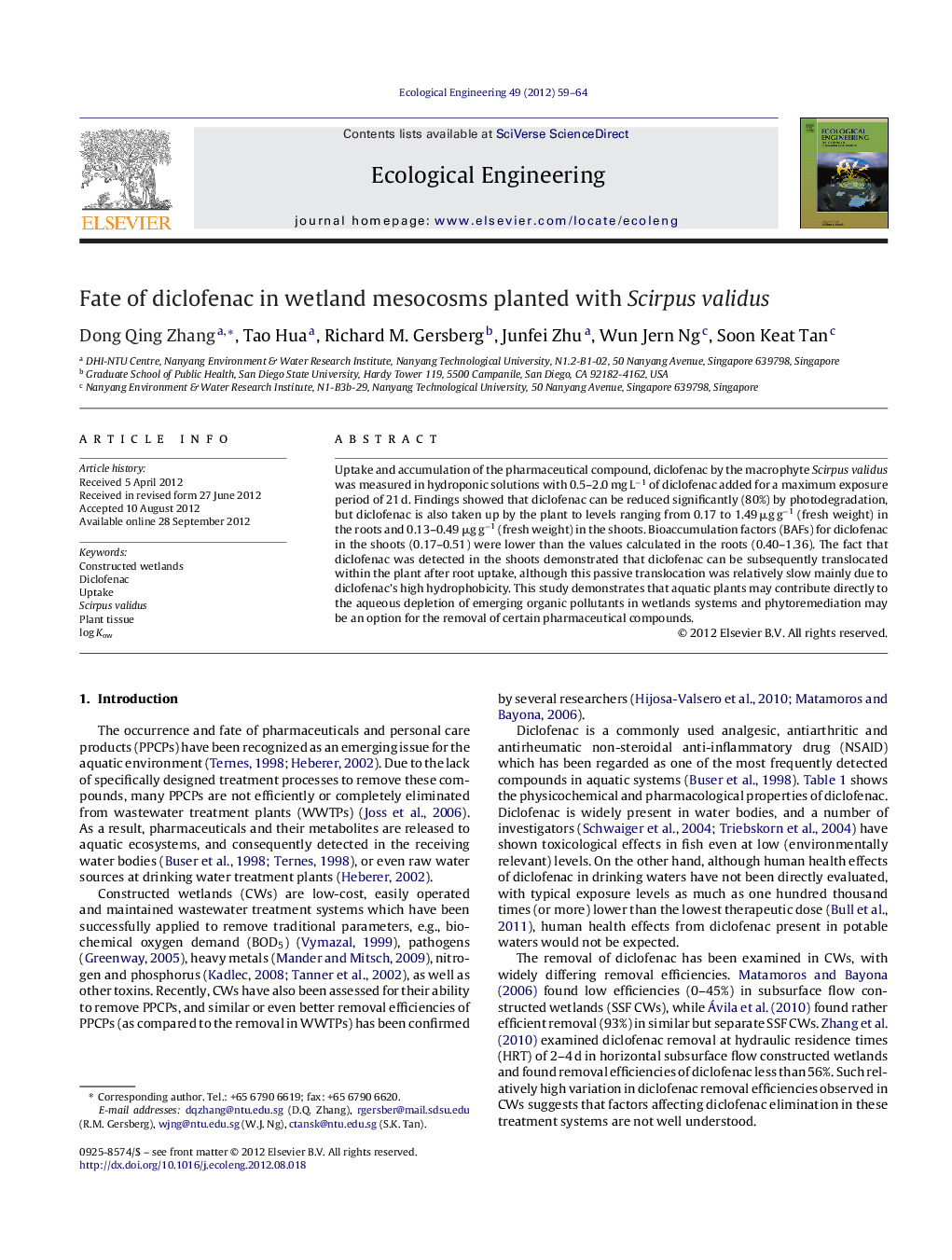| Article ID | Journal | Published Year | Pages | File Type |
|---|---|---|---|---|
| 4389885 | Ecological Engineering | 2012 | 6 Pages |
Uptake and accumulation of the pharmaceutical compound, diclofenac by the macrophyte Scirpus validus was measured in hydroponic solutions with 0.5–2.0 mg L−1 of diclofenac added for a maximum exposure period of 21 d. Findings showed that diclofenac can be reduced significantly (80%) by photodegradation, but diclofenac is also taken up by the plant to levels ranging from 0.17 to 1.49 μg g−1 (fresh weight) in the roots and 0.13–0.49 μg g−1 (fresh weight) in the shoots. Bioaccumulation factors (BAFs) for diclofenac in the shoots (0.17–0.51) were lower than the values calculated in the roots (0.40–1.36). The fact that diclofenac was detected in the shoots demonstrated that diclofenac can be subsequently translocated within the plant after root uptake, although this passive translocation was relatively slow mainly due to diclofenac's high hydrophobicity. This study demonstrates that aquatic plants may contribute directly to the aqueous depletion of emerging organic pollutants in wetlands systems and phytoremediation may be an option for the removal of certain pharmaceutical compounds.
► Diclofenac concentrations ranged from 0.17 to 1.49 μg g−1 in the roots. ► Diclofenac translocation to the shoots ranged from 0.13 to 0.49 μg g−1. ► Bioaccumulation factors (BAFs) for diclofenac in the shoots ranged from 0.17 to 0.51 and in the roots ranged from 0.40 to 1.36. ► Phytoremediation may be an option for the removal of diclofenac. ► Photodegradation played a major role in the elimination of diclofenac from solution.
